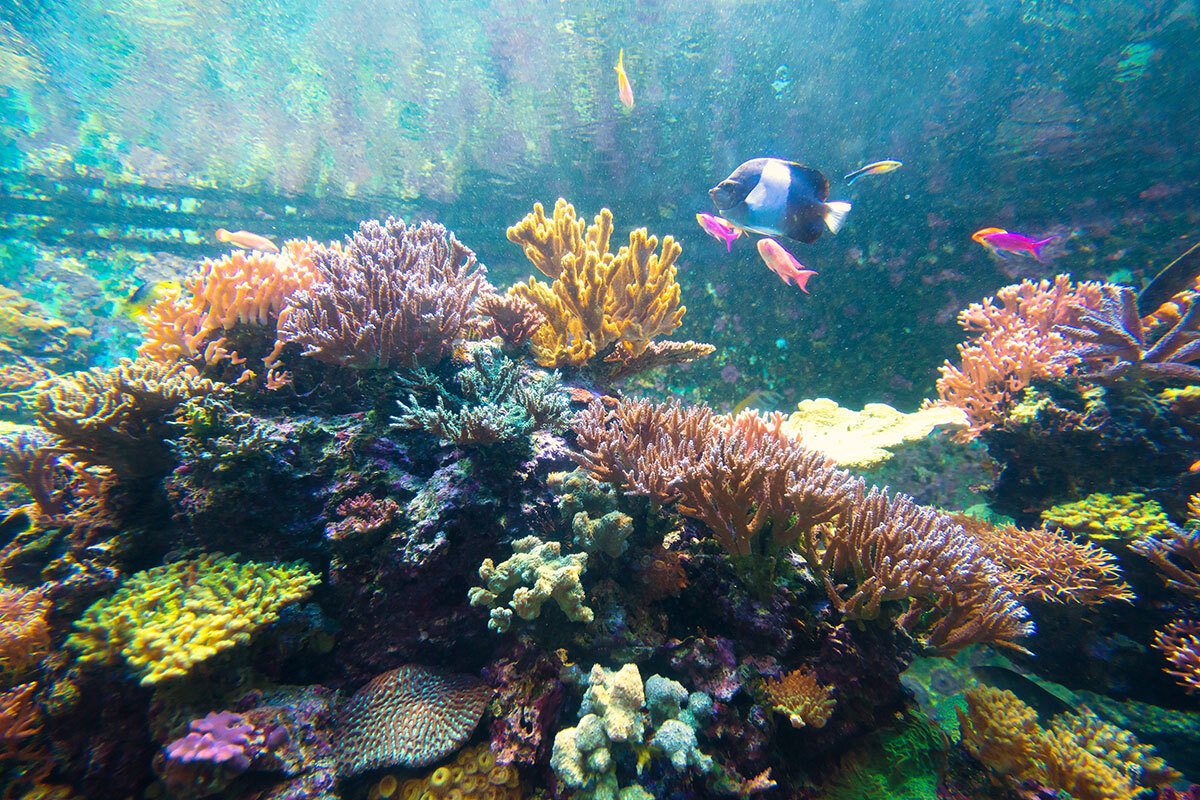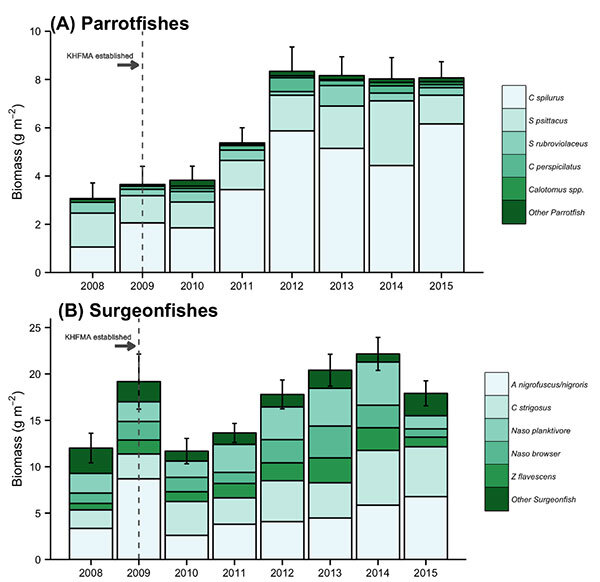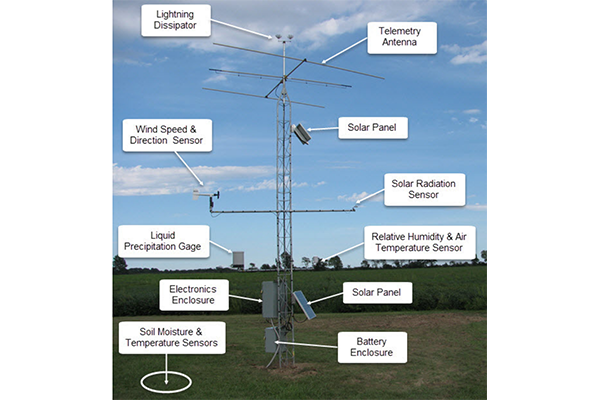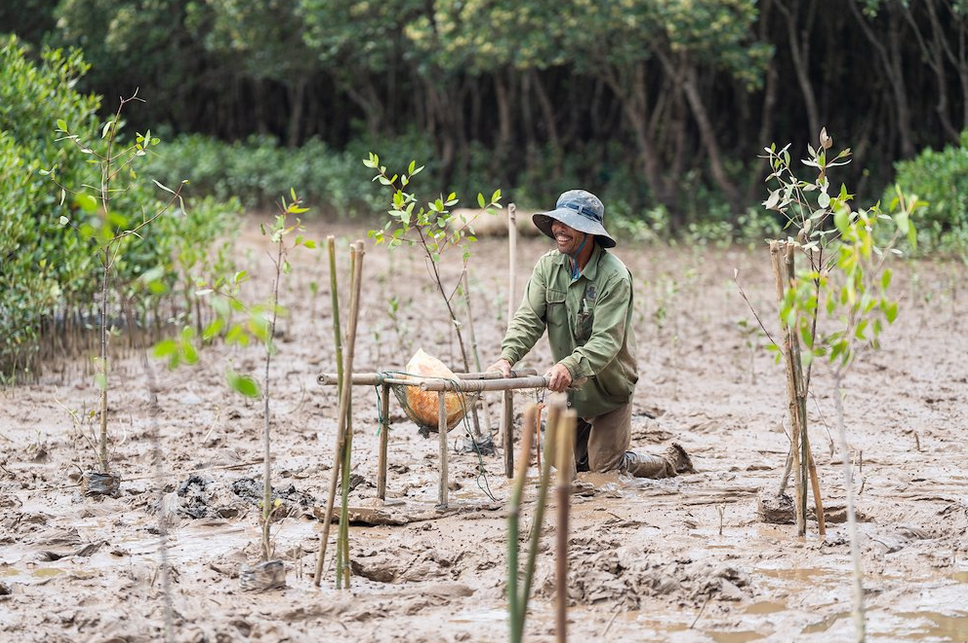
by ake1150 via AdobeStock
Climate change impacts
The tropical coral reefs extending off the west coast of Maui, Hawai’i, USA, are habitats for various fish and other organisms and play a vital role in tourism and the local fishing industry. However, climate change has hurt coral reefs, with coral coverage (see Note) off Kaanapali Beach falling by 40% between 1994 and 2006.
Adaptation activity
The decline in coral reef habitat and concurrent increase in algal blooms is assumed to be caused by an imbalance between factors that promote algal growth (wastewater and fertilizer contamination) and those that inhibit it (herbivorous fish and sea urchin populations). To recover a favorable balance to coral, it is necessary to suppress algal growth.
The Department of Land and Natural Resources in Hawai’i has proposed one measure to change fishery regulations to protect herbivorous organisms that feed on algae, such as fish and sea urchins, to increase herbivores to suppress algal blooms. The current state and trends of coral reefs on the island of Maui and the details of the herbivorous organism protection program are first summarized. Then, using 16 presentations and other events, information on the issue was disseminated to over 800 state residents. Additionally, efforts were made to gain the support of indigenous peoples and stakeholders most affected by the regulations. As a result, the conservation plan was well received by the local population.
In 2009, the Kahekili Herbivore Fisheries Management Area (KHFMA) was established to prevent the decline of coral reefs off the coast of North Kaanapali Beach and Kahekili Beach Park where specific regulations or conservation measures to protect herbivorous organisms did not exist. It was subsequently made illegal to catch, kill, harm, or dispose of living organisms such as surgeonfish, parrotfish, and rudderfish in the KHFMA. In addition, catching sea urchins and feeding fish were also prohibited.
Outputs / Expected benefits
As of 2015, biomass for parrotfish and surgeonfish in the KHFMA increased by 139% and 28%, respectively (see figure). Moreover, the crustose coralline algae cover suitable for the colonization and growth of coral larvae increased from 2% in 2009 to 15% in 2015. In contrast, the coverage of macroalgae remained low during this period.
Although the local reception of the herbivorous organism conservation plan was not uniformly positive, fishermen, including spear fishermen, observed the decline of coral reefs first-hand and recognized and strongly supported the conservation plan, which contributed to the maintenance of local coral reefs and ecosystem services. Indigenous fishermen also viewed the initiative as serving the purpose of maintaining resources for future generations.
KHFMA is an excellent example of the collaboration between state agencies and local communities and is expected to enhance the resilience of coral reefs in the future.

Fig. Changes in biomass of (A) Parrotfishes and (B) Surgeonfishes
(Source: Ivor D. Williams, Darla J. White, Russell T. Sparks, Kevin C. Lino, Jill P. Zamzow, Emily L. A. Kelly, Hailey L. Ramey. "Responses of Herbivorous Fishes and Benthos to 6 Years of Protection at the Kahekili Herbivore Fisheries Management Area, Maui”)
Related Information
- U.S. Climate Resilience Toolkit 「Protecting Fish to Save Coral Reefs」
- Ivor D. Williams、Darla J. White、Russell T. Sparks、Kevin C. Lino、Jill P. Zamzow、Emily L. A. Kelly、Hailey L. Ramey 「Responses of Herbivorous Fishes and Benthos to 6 Years of Protection at the Kahekili Herbivore Fisheries Management Area, Maui」




